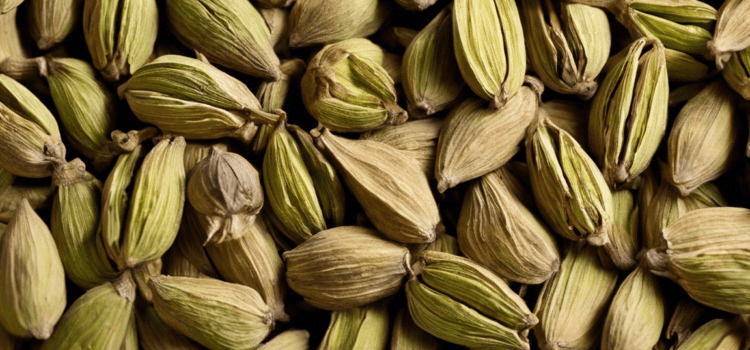Introduction
Cardamom is an aromatic spice with a rich history and a wide range of culinary and medicinal uses. Known for its unique flavor profile that is both spicy and slightly sweet, cardamom has been a prized ingredient in various cuisines for centuries. In addition to its culinary applications, cardamom also offers numerous health benefits, making it a popular choice in traditional medicine systems such as Ayurveda and traditional Chinese medicine.
In Hindi, cardamom is known as “elaichi”, and it is a key ingredient in many Indian dishes and beverages. In this article, we will explore the beauty of cardamom, its Hindi name, and delve into its various uses, benefits, and cultural significance.
History and Origins
Cardamom is native to the Indian subcontinent and is believed to have been cultivated in India for over 3000 years. It was also traded extensively along ancient spice routes, reaching regions such as Egypt, Greece, and Rome. The spice was highly prized for its aromatic and medicinal properties, and was often used in perfumes, incense, and traditional remedies.
In Hindi culture, cardamom holds a special place and is revered for its flavor and fragrance. The Hindi name for cardamom, “elaichi”, is derived from the Sanskrit word “ela”, which means “green”. This is a fitting name for the spice, as cardamom pods are known for their vibrant green color when fresh.
Culinary Uses
Cardamom is a versatile spice that can be used in both sweet and savory dishes. In Indian cuisine, it is a key ingredient in masala chai, a spiced tea that is popular throughout the country. Cardamom is also used in traditional Indian sweets such as kheer (rice pudding) and gulab jamun (deep-fried milk balls soaked in syrup).
In savory dishes, cardamom adds a warm and fragrant note to curries, rice dishes, and meat marinades. It pairs well with other spices such as cinnamon, cloves, and ginger, adding depth and complexity to dishes.
Health Benefits
Beyond its culinary uses, cardamom offers a range of health benefits. It is rich in antioxidants, which help protect the body from oxidative stress and inflammation. Cardamom also contains essential oils such as cineole, terpinene, and limonene, which have antimicrobial and anti-inflammatory properties.
In Ayurveda, cardamom is considered a “tridoshic” herb, meaning it helps balance all three doshas (Vata, Pitta, and Kapha). It is often used to aid digestion, freshen breath, and alleviate respiratory issues such as coughs and congestion.
Beauty and Aromatherapy
The fragrance of cardamom is warm, spicy, and invigorating, making it a popular choice in perfumery and aromatherapy. Cardamom essential oil is used in skincare products for its antimicrobial and antioxidant properties, which help promote clear and radiant skin.
In aromatherapy, cardamom oil is known for its relaxing and uplifting effects. It is often used to reduce stress, improve mental clarity, and enhance mood. The warm and exotic aroma of cardamom can create a welcoming and soothing atmosphere, making it a popular choice for diffusers and scented candles.
Cultural Significance
In Indian culture, cardamom is not just a spice but also a symbol of hospitality and warmth. It is often used to flavor greetings and gifts, symbolizing good wishes and positive energy. In weddings and festivals, cardamom is used in rituals and ceremonies to usher in prosperity and good fortune.
The Hindi name for cardamom, “elaichi”, is also used in expressions and phrases to denote something valuable or prized. For example, someone who is described as “elaichi ka dana” (cardamom seed) is considered precious and special.
FAQs
-
Q: What are the different types of cardamom?
A: The two most common types of cardamom are green cardamom (Elettaria cardamomum) and black cardamom (Amomum subulatum). Green cardamom is more widely used in culinary applications, while black cardamom has a smoky flavor and is often used in savory dishes. -
Q: Can cardamom help with digestive issues?
A: Yes, cardamom is known for its digestive properties and is often used to alleviate indigestion, bloating, and gas. It helps stimulate the production of enzymes that aid in digestion. -
Q: How can I use cardamom in my daily routine?
A: You can add ground cardamom to your morning smoothies or oatmeal, sprinkle it on fruit salads, or brew it with tea for a fragrant and flavorful beverage. -
Q: Is cardamom safe for everyone to consume?
A: While cardamom is generally safe for consumption, it may cause allergic reactions in some individuals. It is best to start with small amounts to assess tolerance. -
Q: Can cardamom be used in natural remedies?
A: Yes, cardamom is often used in traditional medicine systems for its antimicrobial, anti-inflammatory, and antioxidant properties. It can be used in teas, tinctures, or essential oil blends for various health benefits.
In conclusion, cardamom, or “elaichi” in Hindi, is a truly remarkable spice that offers a plethora of culinary, medicinal, and cultural benefits. From its aromatic flavor and health-promoting properties to its cultural significance and symbolism, cardamom continues to captivate and enchant people around the world. Incorporating cardamom into your daily routine can not only enhance your dishes and beverages but also uplift your spirit and well-being.
